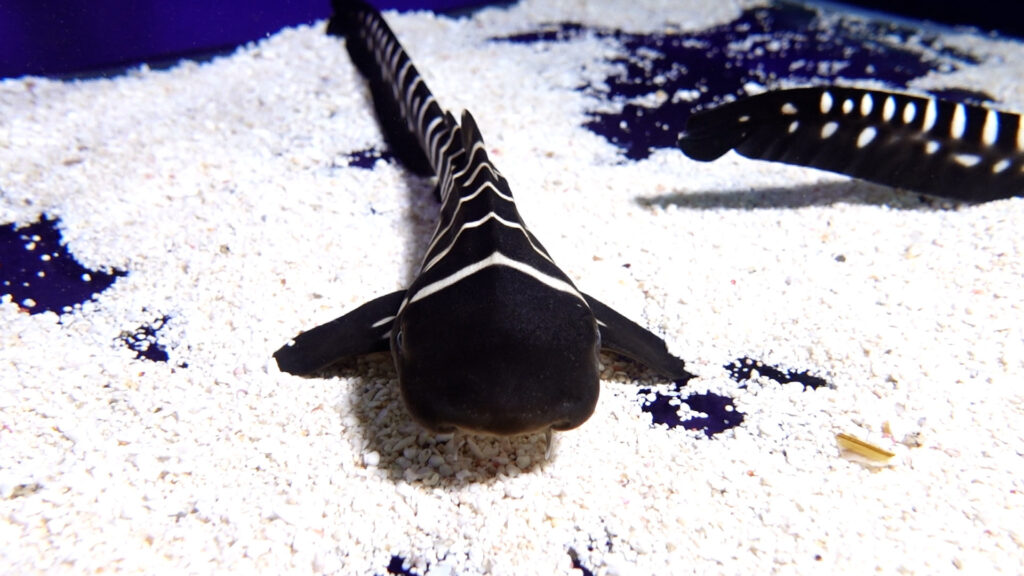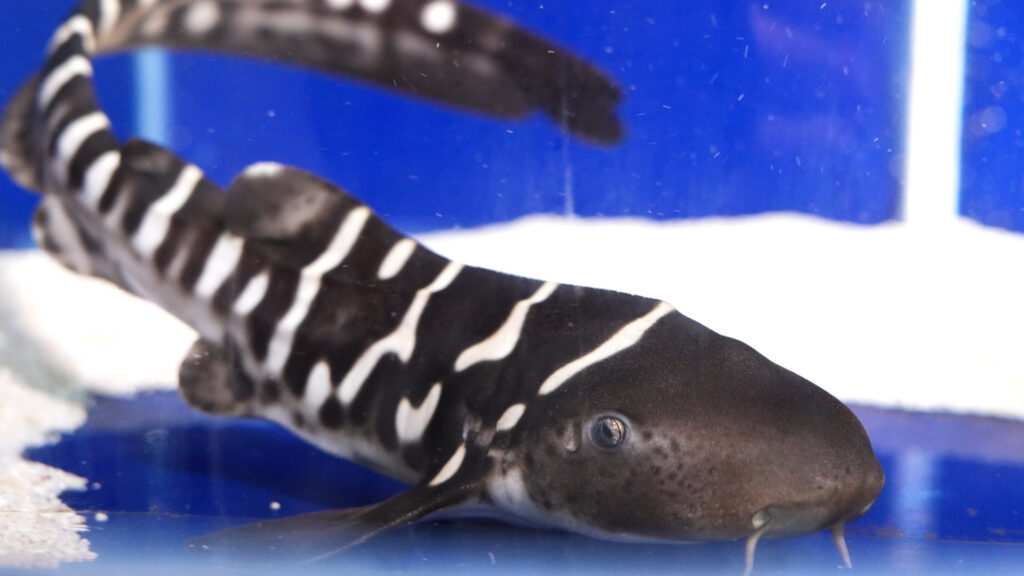Three zebra shark pups have been born at Loro Parque’s aquarium, two males and one female. The new specimens are the offspring of Betty, who joined the aquarium family 9 years ago. The reproduction of these animals under human care is one of the pillars for the conservation of a species that is threatened in nature according to the IUCN.
Due to the decline of their populations, the International Union for Conservation of Nature (IUCN) classified them as endangered in its Red List of Species in which it classifies the conservation status of the planet’s animals. Scientific knowledge applied to the work of professionals in science-based zoos and aquariums, such as Loro Parque, is fundamental to the conservation of these and other species. Through breeding programmes under human care, threatened populations are given a chance against the threat of extinction.
The zoo has already achieved several breeding successes with the species: the first birth of a zebra shark in Spain took place in the park’s facilities. The aquarium is also home to Elvis, the longest-living zebra shark in Europe. The professionals at Loro Parque, thanks to their mastery of the breeding and handling of these animals, have managed to give birth to 27 specimens in the last 7 years, a clear reflection of their well-being.
These zebra sharks, like the rest of Loro Parque’s animals, act as ambassadors for their congeners in the wild, collaborating in conservation projects. For example, genetic analyses are being carried out in the laboratories to study the compatibility of these specimens with those that live in the natural environment, with the aim of assessing their future reintroduction.
Shark populations are essential to marine equilibrium and play a critical role in the health of ecosystems. Understanding and studying these populations, even in controlled environments, is therefore essential for the future of these ecosystems.












